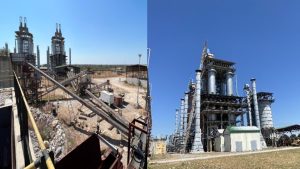The late afternoon sun drapes a muted glow over fields of ageing wellheads that many considered spent, yet beneath that quiet surface lies a distinctive opportunity. At a moment when the energy conversation is dominated by wind turbines and solar farms, one established fuel is being reimagined by a group of investors who see value where others see obsolescence. They are drawn by the interplay of weather-driven demand, policy incentives and an inventive asset-management strategy that converts regulatory liabilities into consistent returns.
Natural gas typically commands attention when summer heatwaves drive air-conditioning loads to new heights across the southern and mid-western United States. As electricity demand peaks, gas-fired generators guarantee reliability, providing a solid underpin beneath pricing. Even so, current inventories persist above the five-year average and production remains resilient, suggesting that only an extraordinary weather event or a surge in LNG exports could trigger meaningful price appreciation. For investors, this dynamic underlines the appeal of a business model built on stability rather than on fleeting spikes.
Beyond the ebb and flow of seasonal demand, natural gas is staking out a vital role in the shift towards lower carbon emissions. Burning cleaner than coal and lighter on carbon dioxide than oil, gas has already contributed to notable air-quality improvements in industrial centres globally. As intermittent renewables expand, gas plants step in to fill supply gaps, a back-up role that is especially prized in regions where energy security is paramount. In Europe, for example, policymakers are underwriting peaking facilities to guard against the volatility of wind and solar output.
In emerging economies the narrative takes on fresh urgency. Rising electricity consumption in South-east Asia is expected to drive plans for nearly 180 gigawatts of new gas-fired capacity by mid-century, positioning gas as the pragmatic bridge away from coal. Meanwhile, carbon capture and storage trials are progressing, laying the groundwork for blue hydrogen production that leverages existing pipelines and storage sites. Should regulatory frameworks and carbon pricing align, captured emissions could flow into geological vaults at scale, further enhancing gas’s credentials in a net-zero world.
Diversified Energy Company has assembled one of the largest portfolios of mature onshore wells in the United States, now exceeding sixty-nine thousand connections. The group has embraced a disciplined hedging programme covering roughly two-thirds of its anticipated volumes over the next two years, insulating cash flows from spot-market swings. Its operations maintain production at low cost and follow a predictable decline profile of around 3.5% annually. Financial discipline has kept leverage at conservative levels and secured favourable credit assessments, while investments in advanced gas-capture technologies have driven emissions intensity well below industry norms. By marrying reliable output with proactive environmental measures, the company is carving out a resilient niche in a landscape of shifting regulatory demands.
Against this backdrop, weather anomalies and growing LNG offtake may well produce intermittent price rallies, yet the company’s core appeal lies in its capacity to generate returns independent of volatile spot markets. Rather than wagering on sudden price jumps, the business model converts decommissioning obligations into accounting gains, executing well retirements at a fraction of the cost others anticipate. In doing so it extends the productive life of assets that would otherwise be abandoned, monetising what was once a regulatory burden into a reliable revenue stream.
Diversified Energy Company plc (LON:DEC) is an independent energy company engaged in the production, marketing, transportation and retirement of primarily natural gas and natural gas liquids related to its U.S. onshore upstream and midstream assets.











































